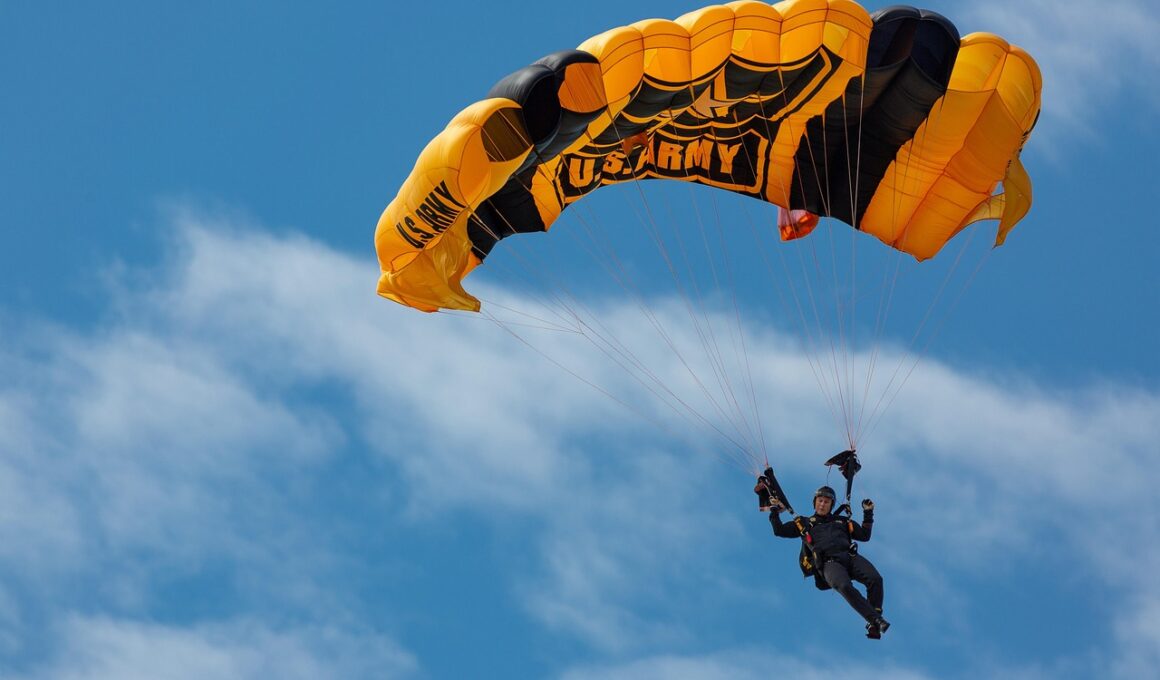The Science of Motor Coordination: A Comprehensive Overview
Motor coordination is a fundamental aspect of human movement and interaction with the environment. It involves the precise timing and control of muscle contractions while integrating sensory feedback to produce smooth motions. Balance and coordination play crucial roles in various daily tasks and sports activities. Developing these skills can enhance physical performance while reducing the risk of injury. Understanding the mechanics behind motor coordination is beneficial not only for athletes but also for individuals looking to improve their overall fitness. Researchers in biomechanics and neurophysiology delve into how our brain and body interact to maintain balance and execute complex movements. Various factors influence coordination, such as age, physical fitness, and practice. This is where assessment of coordination skills becomes important, helping to identify areas of improvement and track progress. Different assessment techniques, including balance tests and agility drills, offer insights into one’s coordination capabilities. Learning more about these methods can motivate individuals towards achieving better motor control and synchronization.
The Role of Balance in Coordination
Balance is integral to effective movement and coordination. It refers to the body’s ability to maintain its center of mass over its base of support. Coordinated movement requires strong balance skills, as they ensure stability during various activities, from walking to complex sports maneuvers. To enhance balance, individuals often engage in exercises focused on core strength, flexibility, and proprioception. Core muscles, which include the abdominals and back muscles, are essential for maintaining an upright posture during various tasks. Flexibility prevents injuries and aids in the range of motion during movements. Proprioception, or the sense of body position, is crucial for adjusting movements in real-time, especially when navigating obstacles. Training programs often incorporate balance-specific drills, such as single-leg stands and stability ball exercises, promoting not only balance but also overall coordination. Additionally, sports science research has shown that improved balance can lead to better performance outcomes in competitive athletes. Engaging in regular balance training can benefit individuals in various life phases, contributing to a more active and healthy lifestyle.
Coordination skills encompass a range of abilities that allow individuals to perform movements in a graceful and efficient manner. These skills typically include hand-eye coordination, foot-eye coordination, and spatial awareness. Various sports and activities emphasize these abilities, showcasing their importance in achieving desired outcomes. For instance, basketball relies heavily on hand-eye coordination for shooting and passing the ball accurately. Similarly, soccer demands excellent foot-eye coordination to control the ball effectively while navigating through opponents. To assess coordination skills, professionals often utilize a combination of standardized tests and sport-specific drills. This helps identify specific strengths and weaknesses in an individual’s coordination capabilities. Common assessment tools include the Bruininks-Oseretsky Test of Motor Proficiency and the Apley Test, both of which measure a person’s motor skills comprehensively. With targeted assessments, trainers can tailor programs to address coordination deficiencies effectively. Regularly practicing coordination-enhancing exercises will yield observable improvements over time. Furthermore, ongoing evaluations provide motivation, encouraging individuals to strive towards their coordination goals. This journey highlights the importance of persistence in mastering movements and achieving overall fitness.
Neurological Foundations of Coordination
The coordination of movements involves complex interactions between different regions of the brain and the nervous system. The cerebellum, for instance, plays a critical role in fine-tuning motor activities, ensuring precision and balance. It processes input from sensory systems and sends feedback to the motor cortex, helping to execute smooth movements. Additionally, the basal ganglia regulate the initiation and control of movement, facilitating coordination between different muscle groups. Understanding these neurological foundations is essential for developing effective training programs aimed at improving motor coordination. Research in neuroscience has demonstrated the plasticity of the brain, meaning that it can adapt and reorganize itself in response to training and practice. This adaptability underscores the value of regular practice in enhancing coordination skills. Moreover, mental imagery techniques can be employed to strengthen neural pathways related to movement. Visualization can significantly contribute to improved performance in athletes by reinforcing the connection between brain and body. Consequently, incorporating both physical and cognitive training methods aids in achieving coordination goals, creating a comprehensive approach to skill development.
Various factors impact an individual’s coordination abilities, including age, fitness level, and the frequency of practice. For instance, younger individuals typically demonstrate superior coordination skills due to increased neuroplasticity and adaptability. In contrast, older adults may experience a decline in coordination, often related to factors such as decreased muscle strength, flexibility, and cognitive processing speed. However, engaging in regular physical activities can counteract these age-related declines, promoting better coordination at any age. Implementing a well-rounded exercise routine that includes strength, balance, and flexibility training directly contributes to enhanced motor control. Athletes, on the other hand, often dedicate significant time to refining their coordination skills, which can set them apart in competitive environments. Consistent practice allows them to master complex movements, improving reaction times, and ensuring their bodies respond effectively. For individuals seeking to enhance their coordination, combining diverse practices, such as dance or team sports with neurocognitive exercises, can lead to improved performance. Ongoing assessments ensure that motivation remains high throughout the training journey.
Assessment Techniques for Coordination Skills
Assessing coordination skills involves a variety of techniques that provide insight into an individual’s capabilities. Common methods include both qualitative and quantitative assessments, each with different focus areas. Qualitative assessments often involve observational analysis, where trainers monitor an individual’s movements during specific drills. These observations can identify patterns, strengths, and areas needing improvement. Conversely, quantitative assessments typically measure performance outcomes using structured tests, tracking progress over time. Using technology, such as motion capture systems and wearable sensors, has also enhanced the accuracy of these evaluations. These tools provide precise data on movement patterns and metrics like speed and accuracy. Self-assessments are valuable, as they promote self-awareness regarding one’s coordination abilities. Individuals can record their performance on various tasks and set personal goals towards improvement. Tailoring specific intervention strategies based on assessment outcomes is crucial. Attention should be given to creating a structured training regimen that targets identified weaknesses while reinforcing strengths. Engaging feedback and collaborative goal setting further enhance the effectiveness of coordination training programs, leading to consistent improvement over time.
Improving coordination skills requires a commitment to consistent practice and training. Individuals can engage in various activities that challenge their coordination, such as martial arts, dance, and team sports. These activities incorporate a mix of movements that promote hand-eye and foot-eye coordination while also developing balance. Moreover, participation in group fitness classes often introduces coordination challenges in a social setting, which can enhance motivation and engagement. Incorporating agility drills, such as ladder exercises or cone drills, into training routines can also yield substantial improvements. The importance of progression in training cannot be understated; gradually increasing the difficulty of exercises ensures continuous development. Emphasizing the need for variety in practice is essential, as monotony can hinder improvement. Incorporating diverse activities not only keeps training fresh but also enhances overall fitness by engaging different muscle groups and coordination skills. Furthermore, participating in regular assessments can help track progress, reaffirming the effectiveness of training strategies. Celebrating small successes along the way boosts motivation, sustaining commitment to long-term coordination development and overall physical fitness.
Conclusion
In summary, motor coordination is imperative for effective movement and athletic performance. Balancing and enhancing coordination skills entail understanding the physiological and neurological mechanisms involved. Various factors like age, fitness levels, and assessment techniques influence an individual’s coordination capabilities. Engaging in regular training based on assessments guarantees improvement while fostering a sense of achievement. By implementing targeted exercises and maintaining a growth mindset, individuals can achieve remarkable progress in coordination skills. This journey ultimately contributes not only to athletic success but also to everyday activities, promoting a healthier lifestyle. Educators and trainers should prioritize coordination training in their programs, potentially enhancing the overall well-being of participants. The integration of cognitive and physical training approaches further enriches coordination skill development, ensuring participants remain engaged. Thus, the science behind motor coordination encompasses a broad spectrum of knowledge and practices beneficial to various age groups. Striving for continuous improvement in coordination skills will empower individuals to navigate their environments more effectively, achieving greater physical competence and confidence in their movements.


